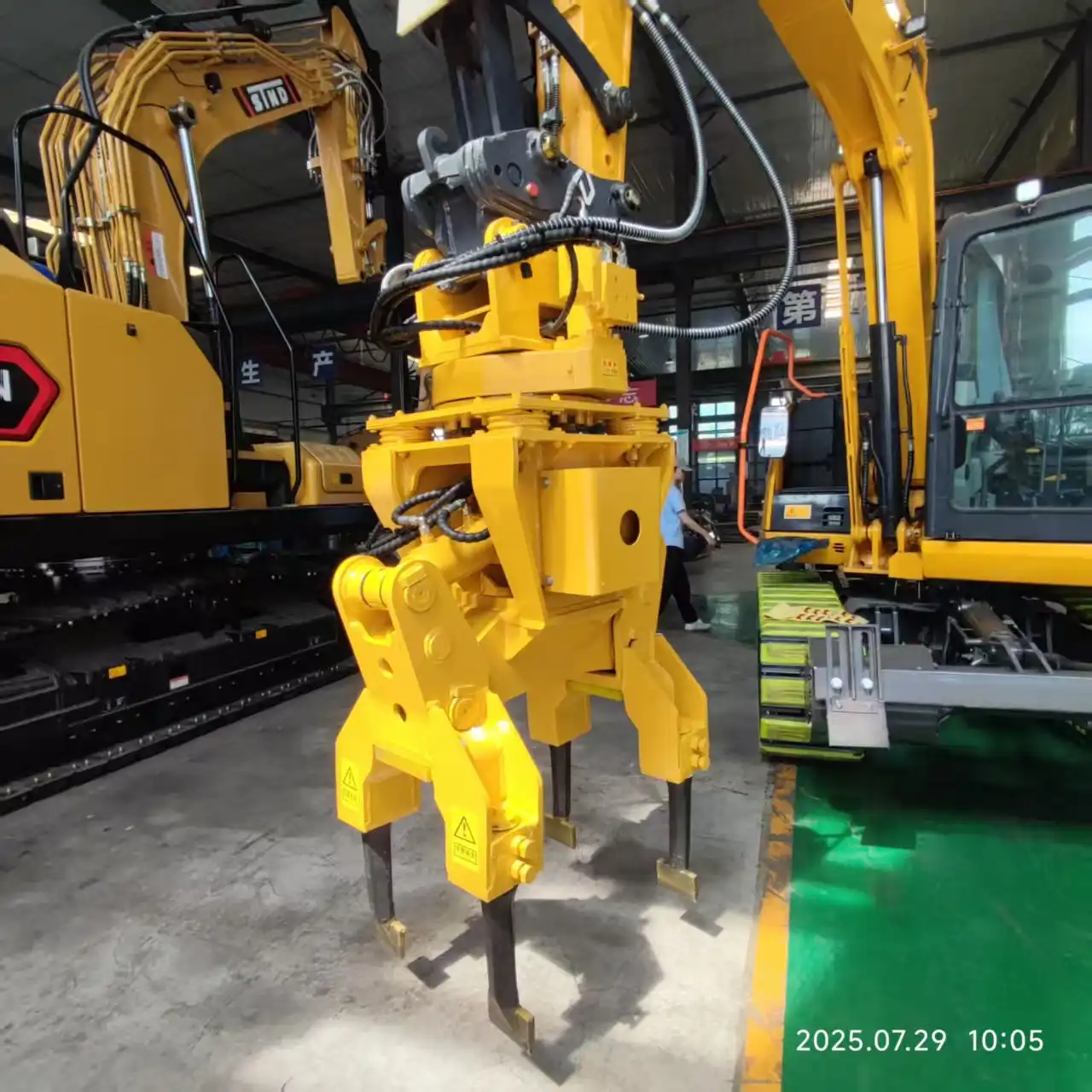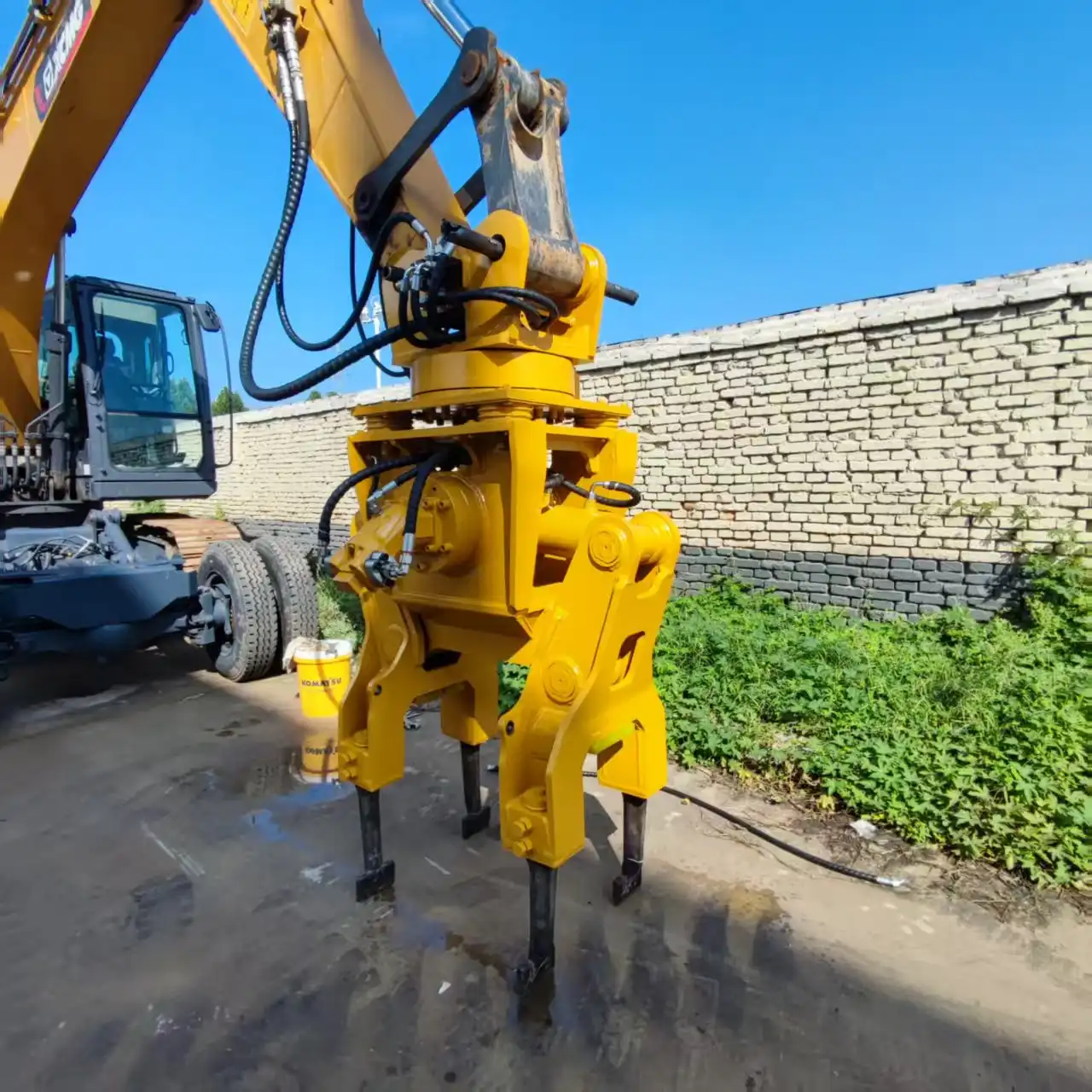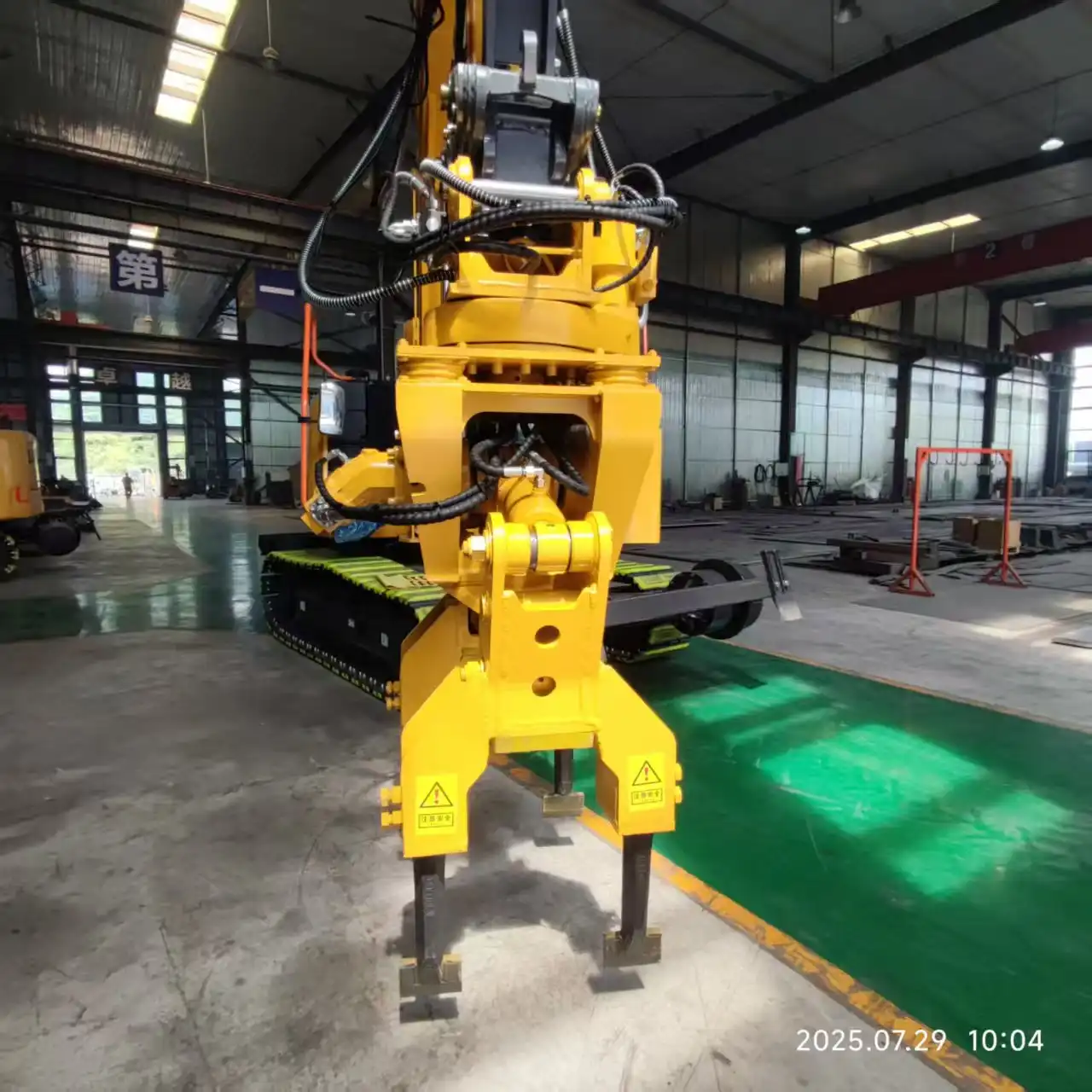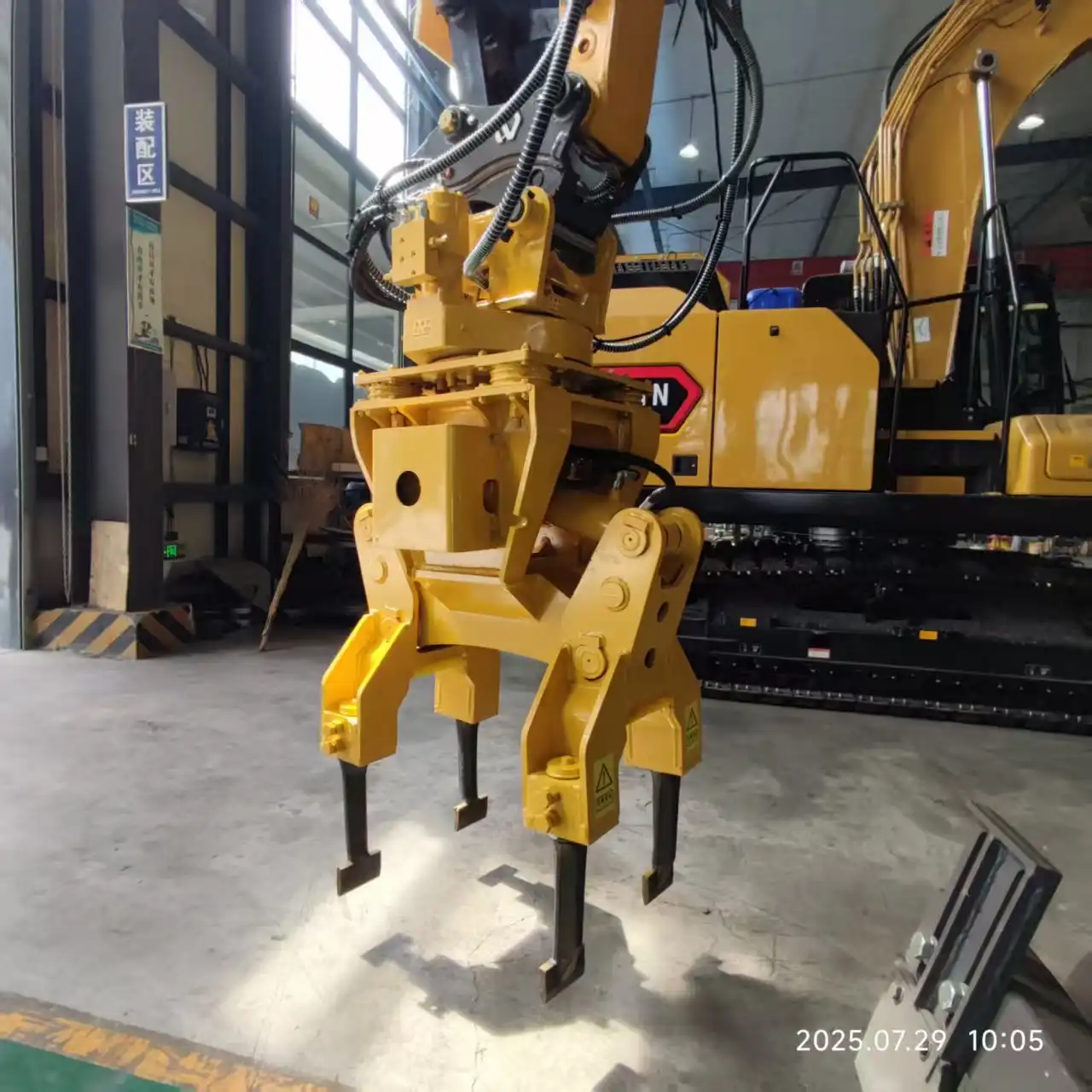How does a hydraulic tamper work?
A hydraulic ballast tamper is a crucial piece of equipment in railway maintenance, designed to ensure track stability and alignment. This sophisticated machine operates through a combination of precise positioning, powerful insertion, high-frequency vibration, and hydraulic clamping. By compacting the ballast beneath railroad ties, hydraulic tampers maintain proper track geometry, essential for safe and smooth rail operations. Let's dive into the intricate workings of this indispensable tool in railway infrastructure maintenance.
Precise Positioning (Enabled by Rotation & Mounting Systems)
Hydraulic rotation for optimal tamper alignment
The first step in the tamping process involves positioning the machine accurately over the track section that requires maintenance. Hydraulic rotation systems play a pivotal role in achieving optimal tamper alignment. These systems allow the tamping unit to rotate 360 degrees, enabling operators to position the tamping tools precisely where they're needed, regardless of the track's curvature or layout.
The hydraulic rotation mechanism utilizes a series of hydraulic cylinders and motors, controlled by sophisticated electronic systems. This setup allows for smooth, precise movements, ensuring that the tamping tools are perfectly aligned with the ties and ballast. The ability to rotate also means that the tamper can work efficiently on both straight tracks and curves, adapting to various track geometries without compromising on accuracy.
Advanced mounting systems for stability and control
To ensure the tamper remains stable during operation, advanced mounting systems are employed. These systems typically consist of sturdy frames and hydraulic stabilizers that anchor the machine to the track. The mounting systems distribute the weight of the tamper evenly, preventing any unwanted movement or vibration that could affect the precision of the tamping process.
Moreover, these mounting systems often incorporate shock-absorbing elements to dampen any external vibrations, further enhancing the stability and control of the tamping operation. This level of stability is crucial for maintaining the accuracy of the tamping process, especially when working on uneven terrain or in challenging weather conditions.
Laser-guided positioning for accurate tamping
Modern hydraulic ballast tampers often employ laser-guided positioning systems to achieve unprecedented levels of accuracy. These systems use laser beams to create a reference line, which the tamper's control system uses to guide the tamping tools. The laser guidance ensures that each tie is tamped to the correct height and level, maintaining the track's proper geometry.
The laser-guided system works in tandem with advanced computer controls, constantly measuring and adjusting the tamper's position. This real-time feedback loop allows for continuous corrections, ensuring that even minute deviations are addressed promptly. The result is a level of precision in track maintenance that was previously unattainable, contributing significantly to the overall safety and efficiency of rail networks.

Insertion of Tamping Heads into Ballast
Hydraulic-powered penetration of tamping tools
Once the tamper is correctly positioned, the next crucial step is the insertion of tamping heads into the ballast. This process relies on powerful hydraulic systems that drive the tamping tools into the stone aggregate surrounding the railroad ties. The hydraulic power ensures that the tools can penetrate even dense or compacted ballast effectively.
The insertion process is carefully controlled to prevent damage to the ties or underlying track structure. Hydraulic pressure sensors monitor the resistance encountered by the tamping tools, allowing the system to adjust the force applied as needed. This intelligent insertion mechanism ensures that the tamping tools reach the optimal depth for effective ballast compaction without risking damage to the track components.
Adjustable depth control for various ballast conditions
Different sections of track may have varying ballast conditions, requiring adjustments in the tamping depth. Modern hydraulic tampers feature sophisticated depth control systems that allow operators to fine-tune the insertion depth of the tamping tools. This adjustability is crucial for addressing the specific needs of each track section.
The depth control system typically uses a combination of hydraulic actuators and electronic sensors to maintain precise control over the tamping tools' movement. Operators can set the desired tamping depth based on factors such as ballast type, track condition, and local regulations. This level of customization ensures that the tamping process is optimized for each unique section of track, contributing to more effective and efficient maintenance operations.
Synchronized multi-tool insertion for efficiency
To maximize efficiency, many hydraulic ballast tampers employ synchronized multi-tool insertion systems. These systems allow multiple tamping tools to be inserted simultaneously, often working on several ties at once. The synchronization is achieved through sophisticated hydraulic and electronic controls that ensure all tools move in perfect harmony.
This synchronized approach significantly increases the speed of the tamping operation without compromising on quality. By working on multiple ties simultaneously, the tamper can cover more ground in less time, reducing the duration of track closures for maintenance. The precision of the synchronized insertion also helps maintain consistent ballast compaction across the entire work area, contributing to more uniform track geometry and stability.

Vibration for Ballast Rearrangement (High-Vibration Motor Core)
High-frequency vibration for optimal ballast compaction
At the heart of the hydraulic ballast tamper's effectiveness is its high-vibration motor core. This component generates powerful, high-frequency vibrations that are crucial for rearranging and compacting the ballast material. The vibration frequency typically ranges from 30 to 40 Hz, carefully calibrated to achieve optimal ballast particle movement without causing damage to the surrounding track structure.
The high-frequency vibrations serve multiple purposes. Firstly, they help break up any compacted or clustered ballast, allowing for better redistribution around the ties. Secondly, the vibrations encourage the ballast particles to settle into a denser, more stable configuration. This process is essential for creating a solid foundation that can withstand the dynamic loads imposed by passing trains, ensuring long-term track stability and safety.
Variable vibration settings for different ballast types
Recognizing that different types of ballast may require varying approaches to compaction, modern hydraulic tampers often feature variable vibration settings. These adjustable settings allow operators to fine-tune the vibration frequency and amplitude based on the specific characteristics of the ballast material being worked on.
For instance, coarser ballast might benefit from lower frequency but higher amplitude vibrations to encourage proper settling, while finer ballast might require higher frequency vibrations to achieve optimal compaction. The ability to adjust these settings ensures that the tamping process is as effective as possible across a wide range of track conditions and ballast types, contributing to more versatile and efficient maintenance operations.
Energy-efficient motors for sustained operation
Given the demanding nature of ballast tamping operations, which often require extended periods of continuous work, energy efficiency is a crucial consideration in the design of hydraulic tampers. Modern machines incorporate energy-efficient motors that can maintain high performance levels while minimizing fuel consumption and environmental impact.
These motors are typically designed with advanced features such as variable displacement pumps, regenerative hydraulic systems, and intelligent power management controls. Such innovations allow the tamper to optimize power usage based on the specific demands of each operation, reducing overall energy consumption without compromising on performance. The result is a more sustainable and cost-effective tamping process that can be sustained over long work periods, crucial for maintaining extensive rail networks efficiently.

Hydraulic Clamping to Compact Ballast
Powerful hydraulic clamps for uniform pressure application
The final stage in the hydraulic ballast tamping process involves the use of powerful hydraulic clamps to apply uniform pressure to the ballast. These clamps, often referred to as "squeeze cylinders," work in tandem with the vibration system to achieve optimal ballast compaction. The hydraulic system allows for precise control over the clamping force, ensuring that the right amount of pressure is applied to compact the ballast without damaging the ties or other track components.
The clamping action is typically synchronized with the vibration cycle, creating a combined effect that significantly enhances the efficiency of the compaction process. As the clamps squeeze the ballast, the vibrations help the particles settle into a denser configuration, filling voids and creating a more stable track bed. This uniform pressure application is crucial for achieving consistent ballast density along the entire length of the treated track section.
Automated clamping cycles for consistent results
To ensure consistency in the tamping process, modern hydraulic ballast tampers employ automated clamping cycles. These pre-programmed sequences control the timing, duration, and force of each clamping action, eliminating variations that might occur with manual operation. The automation also allows for rapid cycling, increasing the overall efficiency of the tamping operation.
The automated cycles are typically customizable, allowing operators to adjust parameters based on specific track conditions or maintenance requirements. This flexibility ensures that the tamping process can be optimized for different scenarios, such as new track construction, routine maintenance, or addressing localized track defects. The result is a more reliable and repeatable tamping process that contributes to improved track quality and reduced maintenance costs over time.
Pressure-sensitive feedback for optimal compaction
Advanced hydraulic tampers incorporate pressure-sensitive feedback systems that continuously monitor the resistance encountered during the clamping process. This real-time data allows the machine to adjust its clamping force dynamically, ensuring optimal compaction is achieved regardless of variations in ballast density or composition.
The pressure-sensitive system works by analyzing the hydraulic pressure required to achieve a certain level of compaction. If the system detects areas of particularly loose or dense ballast, it can automatically adjust the clamping force to compensate, ensuring uniform compaction throughout the treated area. This intelligent compaction approach not only improves the quality of the tamping operation but also helps prevent over-compaction, which could lead to premature ballast degradation or track geometry issues.

FAQ
1. How often should ballast tamping be performed?
The frequency of ballast tamping depends on various factors such as track usage, environmental conditions, and maintenance policies. Generally, high-traffic mainlines may require tamping every 1-2 years, while less frequented tracks might need it every 3-5 years. Regular track inspections help determine when tamping is necessary.
2. Can hydraulic ballast tampers work in all weather conditions?
While hydraulic ballast tampers are designed to operate in various conditions, extreme weather can affect their performance. Very cold temperatures may require special hydraulic fluids, while heavy rain or snow can impact ballast conditions. Most tampers can work effectively in moderate rain or snow, but safety considerations may limit operations in severe weather.
3. How does ballast tamping improve track safety?
Ballast tamping improves track safety by ensuring proper track geometry and stability. It prevents issues like track settling, misalignment, and uneven surfaces that could lead to derailments or excessive wear on rolling stock. Well-maintained ballast also improves drainage, reducing the risk of track bed erosion and instability.
4. What's the difference between continuous action tamping and cyclic tamping?
Continuous action tamping allows the machine to tamp while moving along the track, offering higher production rates. Cyclic tamping involves stopping at each tie for the tamping process. Continuous action is generally faster but may be less precise, while cyclic tamping offers more control and is often used for spot repairs or areas requiring special attention.
5. How long does a typical ballast tamping operation take?
The duration of a ballast tamping operation varies depending on the length of track being maintained, the condition of the ballast, and the type of tamper used. On average, a modern high-production tamper can cover about 1-2 kilometers of track per hour under ideal conditions. However, complex track geometries or severe track defects can significantly extend this time.
Hydraulic Ballast Tamper Supplier
Tiannuo Machinery stands at the forefront of railway maintenance equipment manufacturing, offering a comprehensive range of solutions. Our product line extends beyond tamping machines to include sleeper changing machines, screening equipment, and specialized excavator modifications tailored for railway applications. With a focus on innovation and quality, Tiannuo Machinery provides tools essential for maintaining track geometry and ensuring smooth rail operations. Our hydraulic ballast tampers are designed for optimal performance, featuring adjustable tamping depths, high-frequency vibration motors, and advanced positioning systems. For inquiries about our railway maintenance equipment or to discuss your specific needs, contact us at rich@stnd-machinery.com.
References
- Johnson, R. (2021). Advanced Track Maintenance Techniques. Railway Engineering Journal, 45(3), 178-192.
- Smith, A. & Brown, B. (2020). Hydraulic Systems in Modern Railway Equipment. International Journal of Rail Technology, 9(2), 45-60.
- Thompson, C. (2019). Ballast Tamping: Principles and Practices. Railway Track Maintenance Handbook (3rd ed.). Railway Publishing Co.
- Wilson, D. et al. (2022). Innovations in Track Geometry Measurement and Correction. Proceedings of the International Railway Conference, 112-128.
- Lee, S. (2018). Energy Efficiency in Railway Maintenance Equipment. Sustainable Rail Infrastructure, 7(4), 302-315.
- Garcia, M. & Patel, K. (2023). Automation and Precision in Railway Track Maintenance. Digital Railways Quarterly, 11(1), 78-93.
About Author: Arm
Arm is a leading expert in the field of specialized construction and railway maintenance equipment, working at Tiannuo Company.

